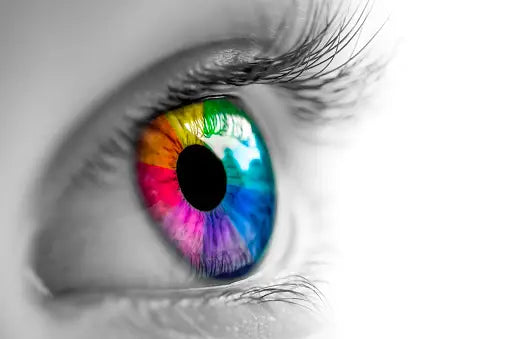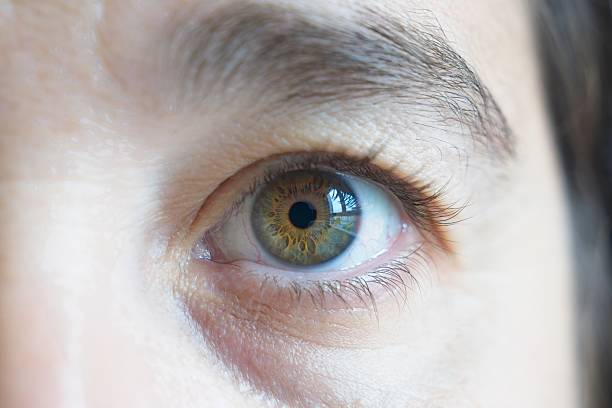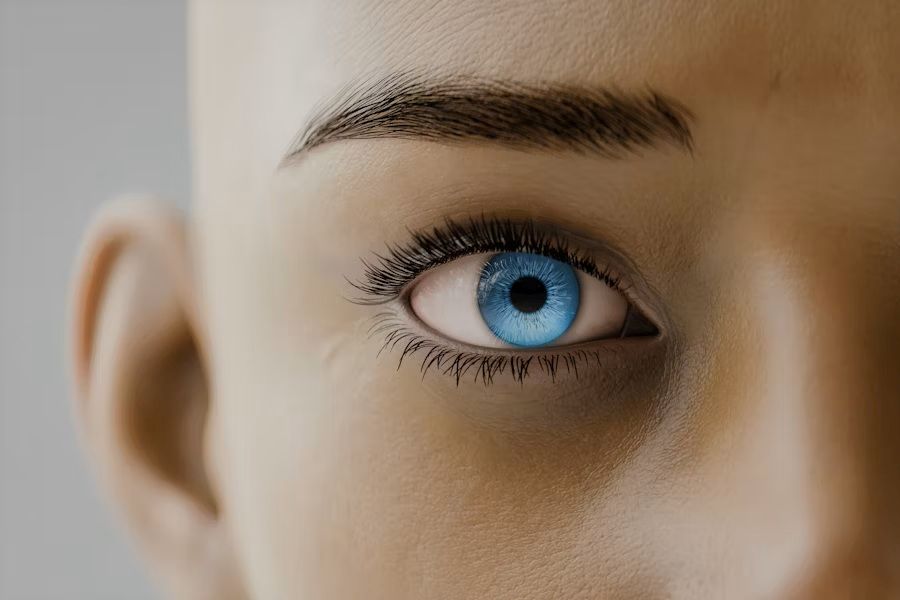Your Cart is Empty
Can Eyes Really Change Color? Exploring the Possibilities

Have you ever wondered if your eyes can truly change color? In this fascinating article, we will delve into the science behind eye color, explore the factors that can influence changes, and separate the myths from the facts surrounding this intriguing phenomenon.
The Science of Eye Color
To understand if eyes can change color, we must first explore the science behind eye color. The primary factor determining eye color is the pigmentation of the iris, along with how light scatters within it.
Genetic Factors
Eye color is a polygenic trait, meaning multiple genes influence it. The two main genes involved are OCA2 and HERC2, located on chromosome 15. These genes regulate melanin production and distribution in the iris. Variations in these genes can lead to a wide range of eye colors.
A study published in Nature Genetics found that over 16 different genes can influence eye color, explaining the vast diversity among individuals. This genetic complexity is why even siblings can have different eye colors.
Biological Mechanisms
The iris consists of two layers: the front stroma and the back epithelium. Melanocytes in the stroma produce melanin, the pigment responsible for eye color. The density and distribution of these melanocytes, along with the type of melanin they produce (eumelanin or pheomelanin), determine the eye's hue.
Light scattering also plays a crucial role in eye color appearance. For example, blue eyes appear blue due to the Tyndall effect, where shorter wavelengths of light scatter more than longer wavelengths, giving the iris a blue tint.
Factors That Can Influence Eye Color
While genetics primarily determine eye color, various factors can cause temporary or permanent changes. These include age, lighting conditions, emotions, and health conditions.
Age
Eye color can change as people age. Babies are often born with blue or gray eyes, which may darken over the first few years of life as melanin production increases. In older adults, the iris can lose pigment, leading to lighter eye color.
Lighting Conditions
Lighting significantly affects the perceived color of the eyes. The same pair of eyes can appear to change color under different lighting conditions due to how light interacts with the iris and surrounding environment. Bright sunlight, for example, can make eyes appear lighter or more vibrant.
Emotions
Emotions can cause the pupils to dilate or constrict, making the eyes appear darker or lighter. When someone is excited or angry, their pupils may dilate, giving the illusion of darker eyes. However, this is a temporary effect and does not alter the actual iris color.
Health Conditions
Certain health conditions can lead to changes in eye color. Horner's syndrome, for instance, can cause one eye to appear lighter than the other. Some medications, such as prostaglandin analogs used to treat glaucoma, can also darken the iris over time.
Medical Conditions Affecting Eye Color
Several medical conditions can cause changes in eye color, either temporarily or permanently. Let's explore some of these conditions in more detail.
Heterochromia
Heterochromia is a condition where an individual has two different colored eyes or segments of different colors in the same eye. It can be congenital (present at birth) or acquired due to injury or disease. There are three types of heterochromia:
-
Complete Heterochromia: One eye is a completely different color from the other.
-
Sectoral Heterochromia: A segment of one eye is a different color from the rest of the eye.
-
Central Heterochromia: The inner ring of the iris is a different color than the outer ring.
Glaucoma
Glaucoma is a group of eye conditions that damage the optic nerve, often due to high intraocular pressure. Some treatments for glaucoma, such as prostaglandin analogs, can cause the iris to darken gradually. This change is usually permanent and may be more noticeable in people with lighter-colored eyes.
Fuchs' Heterochromic Iridocyclitis
Fuchs' heterochromic iridocyclitis is a rare form of chronic uveitis that can cause heterochromia. It leads to inflammation in the front part of the eye, affecting the iris and ciliary body. This condition can result in a lighter-colored iris and may also cause cataracts and glaucoma.
Can Eye Color Change Naturally Over Time?
Many people wonder if eye color can change naturally as they age. While significant changes are rare, subtle shifts can occur throughout a person's lifetime.
Infancy and Childhood
Most babies are born with blue or gray eyes due to low melanin levels. As they grow and melanin production increases, their eye color may change to brown, green, or hazel. This process usually stabilizes by the age of three, and the child's eye color remains relatively constant thereafter.
Adulthood
In adults, noticeable changes in eye color are uncommon but not impossible. Some individuals may experience subtle shifts due to hormonal fluctuations, prolonged sun exposure, or other environmental factors. However, these changes are usually minor and may not be easily discernible.
Aging
As people age, their eyes can lose pigment, leading to lighter eye color. This is more common in individuals with lighter-colored eyes, such as blue or green. Additionally, certain age-related conditions, like cataracts, can affect the appearance of eye color by making the eyes appear cloudy or milky.
Myths and Misconceptions About Eye Color Change
There are numerous myths and misconceptions surrounding eye color change. Let's debunk some of the most common ones and provide factual information.
Myth 1: Eye Color Can Change Based on Mood
While emotions can cause the pupils to dilate or constrict, making the eyes appear darker or lighter, they do not change the actual color of the iris. The perceived change is temporary and not a true alteration of eye color.
Myth 2: Diet Can Change Eye Color
Some believe that certain foods or supplements can change eye color. However, there is no scientific evidence to support this claim. While a healthy diet can improve overall eye health, it does not alter the pigmentation of the iris.
Myth 3: Eye Color Can Change Overnight
Eye color changes gradually over time due to genetic, biological, or environmental factors. Sudden changes in eye color are rare and may indicate an underlying medical condition that requires attention. If you notice a rapid change in your eye color, consult an eye care professional.
Impact of Diet and Lifestyle on Eye Color
While diet and lifestyle can impact overall eye health, their influence on eye color is minimal at best. Let's examine the evidence behind these claims.
Diet
A balanced diet is essential for maintaining healthy eyes, but there is no scientific evidence to suggest that specific foods can change eye color. However, certain nutrients can support eye health:
-
Vitamin A: Found in carrots, sweet potatoes, and spinach, vitamin A is crucial for maintaining good vision.
-
Omega-3 Fatty Acids: Found in fish, flaxseeds, and walnuts, omega-3s can reduce the risk of age-related macular degeneration.
-
Antioxidants: Found in berries, nuts, and green leafy vegetables, antioxidants can protect the eyes from oxidative stress.
Lifestyle
Lifestyle factors such as sun exposure and smoking can affect eye health but are unlikely to change eye color. Prolonged exposure to UV rays can increase the risk of cataracts and other eye conditions, while smoking can lead to various eye diseases. Wearing sunglasses and avoiding smoking are essential for maintaining healthy eyes.
Cosmetic and Medical Interventions
For those seeking to change their eye color, there are cosmetic and medical procedures available. However, it's crucial to understand the risks and limitations of these interventions.
Colored Contact Lenses
Colored contact lenses are a popular and non-invasive way to temporarily change eye color. They come in various colors and designs, allowing individuals to experiment with different looks. However, it is essential to use them under the guidance of an eye care professional to avoid complications such as infections or corneal damage.
Iris Implant Surgery
Iris implant surgery is a more permanent solution for changing eye color. Originally developed to treat eye conditions such as aniridia (absence of the iris), it has gained popularity for cosmetic purposes. The procedure involves inserting a colored silicone implant into the eye. However, it carries significant risks, including vision loss, glaucoma, and cataracts. Many eye care professionals advise against this surgery for purely cosmetic reasons.
Final Thoughts
In conclusion, while eye color can change under certain circumstances, it is usually due to specific factors or conditions. Genetics play a primary role in determining eye color, but age, health conditions, and environmental factors can also influence it.
Understanding the science behind eye color change and separating myths from facts can help clarify this intriguing topic. Whether through natural changes or cosmetic interventions, the possibility of altering eye color continues to captivate our curiosity.
However, it is essential to prioritize eye health over cosmetic desires. If you are considering any procedures to change your eye color, consult with a qualified eye care professional to discuss the risks and benefits.
For more information on related topics, explore our articles on the impact of nutrition on eye health and advancements in eye care technology. By taking care of your eyes and staying informed, you can maintain healthy vision for years to come.
References
-
Sturm, R. A., & Frudakis, T. N. (2004). Eye colour: portals into pigmentation genes and ancestry. Trends in Genetics, 20(8), 327-332.
-
Liu, F., Wollstein, A., Hysi, P. G., Ankra-Badu, G. A., Spector, T. D., Park, D., ... & Kayser, M. (2010). Digital quantification of human eye color highlights genetic association of three new loci. PLoS Genetics, 6(5), e1000934.
-
Imesch, P. D., Wallow, I. H., & Albert, D. M. (1997). The color of the human eye: a review of morphologic correlates and of some conditions that affect iridial pigmentation. Survey of Ophthalmology, 41, S117-S123.
Leave a comment
Comments will be approved before showing up.




